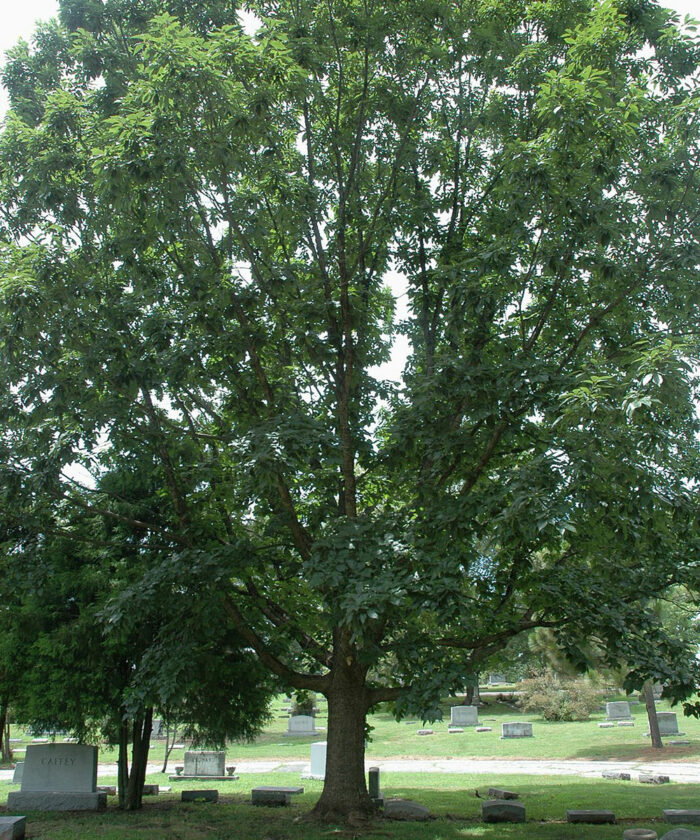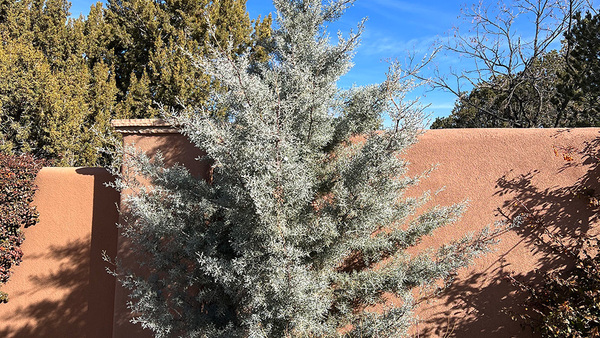
Trees anchor our landscapes both in size and scale. Landscapes without trees seem barren; even desert environments need trees. Trees stand out in the arid high desert where I live. I am especially drawn to mature trees that have stood tall and proud against the test of time.
In the Southwest, as in many regions, mature conifer and deciduous trees are losing the battle against climate change at a rapid rate. When choosing to plant new trees in your property, it makes sense to choose tough, resilient trees that can stand up to the effects of climate change.
The species and varieties featured below are ones tested by my experience of planting in the Southwest over the decades. They have been selected for their easy-care maintenance requirements, year-long interest, overall beauty, and, above all, resilience.
Summerburst® Golden rain tree
Koelreuteria paniculata ‘JFS-Sunleaf’, Zones 5–9
Summerburst® golden rain tree has bright yellow flowers that bloom in large clusters in midsummer, followed by yellow fall foliage. It reaches 30 feet tall and 30 feet wide at maturity with a rounded habit. This drought-tolerant tree takes full sun, requires little irrigation, and tolerates high temperatures. It’s disease resistant and pest-proof to boot. It also has tough bark, making it a good choice for parking lots and streetscapes.
‘Prairifire’ crabapple
Malus ‘Prairifire’, Zones 4–8
‘Priairifire’ crabapple is a tough tree with excellent resistance to the many diseases that plague crabapples, such as scab, fireblight, cedar-apple rust, and mildew. It also tolerates urban pollution well. This tree grows 20 feet tall and wide with an upright, rounded, spreading habit of branches. It takes medium irrigation in full sun. Flowers bloom bright pinkish-red in spring and turn into small dark red apples (which are inedible). ‘Prairifire’ has good fall color with deeply yellow leaves.
‘Winter King’ hawthorn
Crataegus viridis ‘Winter King’, Zones 4–7
This hawthorn grows 20 feet tall and 25 feet wide with branches that grow in a vase-shaped habit. White clusters of flowers bloom in spring. The silvery bark contrasts nicely with the dark green, glossy leaves, which turn yellow in fall. Additionally, the angular lines of the branching pattern give it a bold appearance in winter. ‘Winter King’ takes low water and full sun. It is one of the most disease-resistant hawthorns out there and is also resistant to pests.
Chinkapin oak
Quercus muehlenbergii, Zones 5–7
Chinkapin oak is distinguishable as having some of the best resistance to oak wilt of any oak out there, and it’s resistant to other diseases and pests as well. It has a rounded, open habit and grows 45 feet tall and wide. This oak has low water requirements and takes full sun. Fall foliage color is yellow to brown. As a bonus, this tree is tolerant of alkaline soils.
‘Frontier’ elm
Ulmus ‘Frontier’, Zones 4–9
This elm is notable for its resistant to Dutch elm disease. It features beautiful reddish-purple to burgundy fall foliage that is particularly long-lasting. ‘Frontier’ takes medium water in full sun, with a vase- or oval-shaped habit of growth. At maturity, it grows 40 feet tall and 30 feet wide.
Resilient trees typically have tough, sturdy, gnarly, thick, or curled bark to avoid sunscald. Smooth, sensitive, thin bark would necessitate wrapping trees to avoid sunscald. In a similar way to how too much sun can cause skin cancer in humans, continual or perpetual sunscald will eventually kill your trees.
Well-drained, healthy soil is always recommended when planting trees. Whenever possible, courtyard or fence protection is encouraged to mitigate exposure to winds.
For more tough, resilient plants for the Southwest, check out:
—Mark Brotton, APLD, owns and operates Living Water, Irrigation, and Landscape based in Santa Fe, New Mexico.


















Comments
Log in or create an account to post a comment.
Sign up Log in